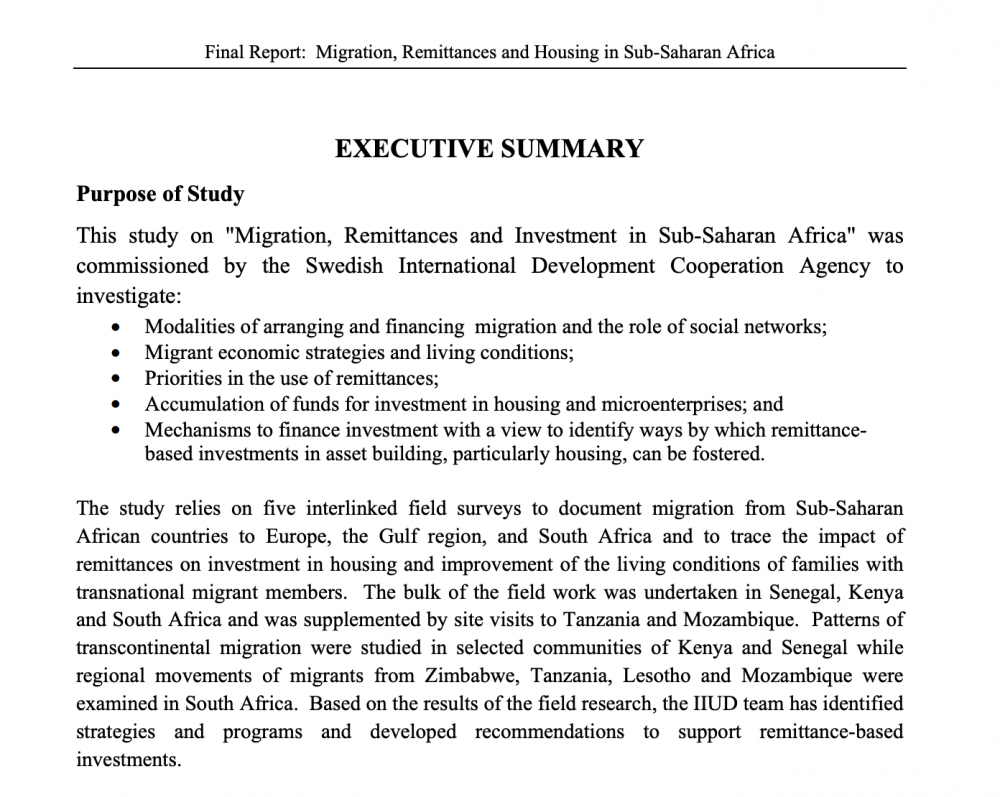Abstract
In 2007 and 2008, I2UD conducted a study on “Migration, Remittances and Housing in Sub-Saharan Africa,” sponsored by a successful partnership with the Swedish International Development Cooperation Agency (Sida). The report defines recommendations for target funding for migrant populations in Senegal, Kenya, Tanzania, Mozambique, and South Africa.
The study sought to foster the ability of migrants to improve their incomes and their living environments through access to housing, infrastructure, and financial services. Documents include an interim report from 2007, and final report from 2008.
Excerpt
[Excerpt: Executive Summary p. 1. Final Report: Migration, Remittances and Housing in Sub-Saharan Africa, “Purpose of Study,”August 2008, Page 1]

See related I2UD projects below
| Project Year: | 2007-2008 |
| Project Type: | Research Paper |
| Geographic Regions: | Sub-Saharan Africa (Kenya; Senegal; Tanzania; Mozambique; South Africa) |
| Reports: | |
| Authors: | Erick Guerra; Mona Serageldin; Ian Chodikoff, Architect and Urban Planner, Toronto, Canada; Prof. Ababacar Dieng, University of Dakar, Senegal; Richard Kruger, Management Consultant, Pretoria South Africa; Prof. Winnie Mituallah, University of Nairobi, Kenya; Chelina Odbert, Urban Planner, Boston; Johann Watermeyer, Principal, Dynex Consulting, Pretoria, South Africa Research Assistants: Oumar Ngalla Ndiour, Senegal; Mamadou Yaya Sabaly, Senegal; Gonde Fall, Senegal; Florence Mitullah, Kenya, Peter Oty, Kenya; Serame Phakedi, South Africa, George Lubidla, South Africa, Elizabeth Mpako, South Africa |
| Sponsors: | Swedish International Development Cooperation Agency (Sida) |
| Categories: | Reconciliation and Development |
| ID: | 2007_07_001 |

